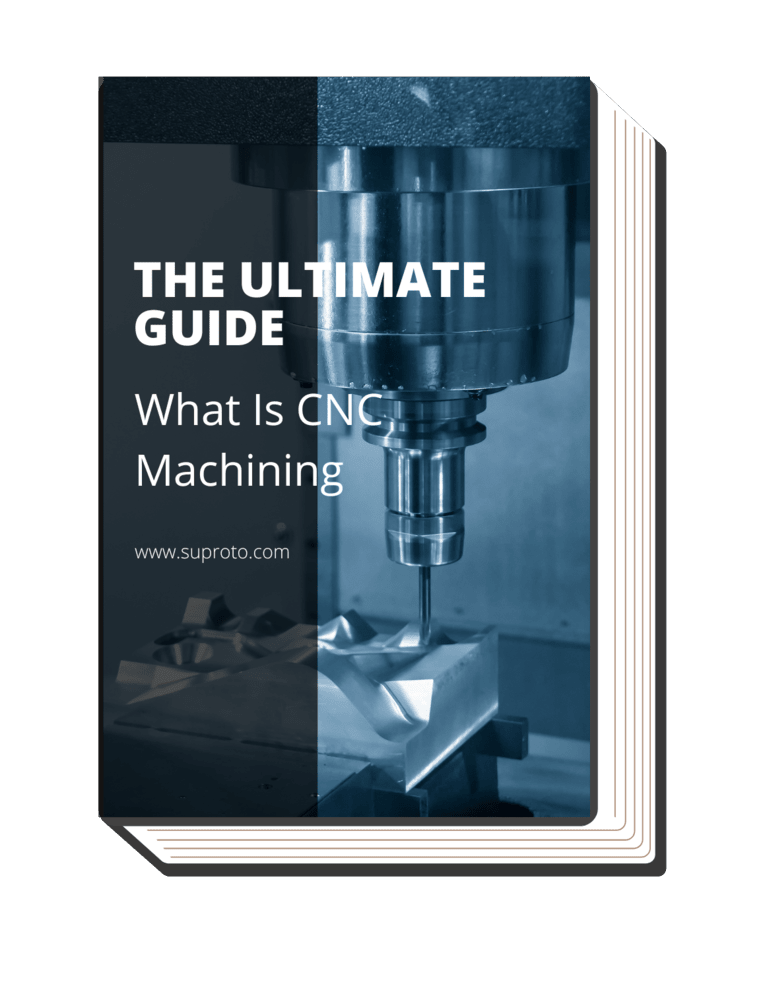Ever felt baffled by the intricacies of spline shafts? Navigating the world of spline shafts can be a daunting endeavor, particularly when it comes to understanding their intricate design and proper maintenance. With their complex design and extensive applications, they can certainly seem intimidating.
The complexity of their manufacture and the variety of applications can leave many overwhelmed. But fear not! This all-encompassing guide is crafted to demystify spline shafts, providing an in-depth understanding and practical solutions.
So, let’s delve in.
1. Spline Shafts: An Overview
According to Item 24, spline shafts are a type of profiled shaft that create mechanically locked connections. They are characterized by their multiple teeth, which engage with complementary grooves in a mating part, enabling a secure connection and smooth power transmission.
2. Historical Evolution of Spline Shafts
Tracing the history of spline shafts offers valuable insights into the progress of mechanical engineering. Here are some key historical milestones:
The Advent of Spline Shafts
Based from research, the birth of spline shafts goes back to the era of steam engines. They were primarily utilized in the locomotives of those times, acting as critical components for transferring power. In the early days, spline shafts were rather rudimentary in design and functionality. They were usually straight-sided, with a limited number of teeth along the shaft length.
The Industrial Revolution Impact
The onset of the Industrial Revolution marked a significant turning point in the evolution of spline shafts. As machinery grew increasingly complex, the demand for improved and more efficient components escalated. The need for more secure connections and higher torque transmission capabilities led to substantial advancements in the design and manufacturing of spline shafts.
The Dawn of the Digital Age
The digital age has ushered in a new era of technological advancements, significantly transforming the way spline shafts are manufactured. The advent of Computer Numerical Control (CNC) technology has been a game-changer in the industry. Additionally, CNC machining has made it possible to create more complex and customized spline designs, broadening the application scope of spline shafts.
3. Types of Spline Shafts
Spline shafts are not a one-size-fits-all solution. They come in various forms, each catering to specific mechanical requirements. Here are the three primary types of spline shafts:
Involute Spline Shafts
Involute spline shafts are a popular type in many industrial settings. What sets them apart is their unique tooth profile, which allows for consistent engagement between the shaft and its mating component. This characteristic ensures smooth, efficient power transmission and is highly appreciated by engineers and technicians alike.
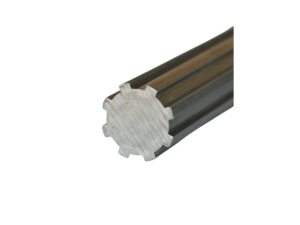
Straight-Sided Spline Shafts
Straight-sided spline shafts are another type, characterized by their straight, parallel-sided teeth. Believe me, these shafts are appreciated for their ability to bear high loads, offering reliable performance in heavy-duty applications. Their design simplicity also makes them easier to manufacture and maintain, making them a go-to choice in several industries.
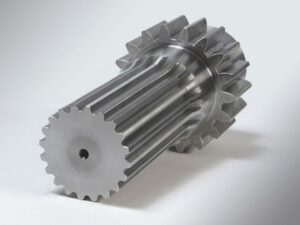
Helical Spline Shafts
Helical spline shafts, with their helically arranged teeth, stand out in the world of spline shafts. The helical design helps distribute the load over several teeth, reducing the pressure on individual teeth and enhancing the lifespan of the component. While manufacturing them is somewhat more complex due to their geometry, they are a preferred choice for applications demanding high torque and longevity.
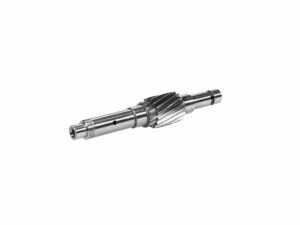
4. Key Components of Spline Shafts
Understanding spline shafts necessitates a close look at their integral parts. Here are the three major components of a spline shaft: the splines themselves, the shaft, and the coupling.
Splines
Splines, often referred to as the teeth of the shaft, are the small ridges or projections running along the shaft’s length. These interlock with corresponding grooves in a mating component, allowing the transfer of torque and movement. The splines’ design, their count, and how they are spaced can vary widely, based on the application’s specific needs.
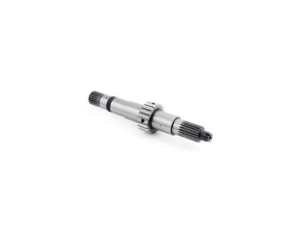
Shafts
The shaft, like the transmission shaft, acts as the backbone of the spline shaft assembly. It is essentially a long, cylindrical component typically constructed from robust and durable materials such as stainless steel, aluminum, or sometimes even composites. The shaft holds the splines and is designed to withstand the stresses and strains that occur during operation.

Couplings
Couplings, the final piece of the puzzle, are used to connect the spline shaft to the mating component in the machinery. They are specifically designed to fit the splines perfectly, enabling effective torque transfer. Couplings are usually manufactured to be as sturdy as the shaft and are typically made from similar materials.
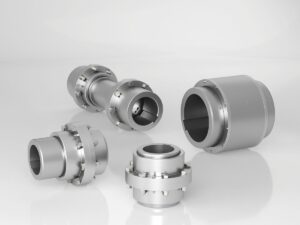
5. Spline Shaft Manufacturing Processes
The manufacturing process of spline shafts is a complex one. Here are the main steps in the process:
Step#1 Forging and Machining
At Suproto, the first step in manufacturing a spline shaft is forging. This process involves heating a metal piece and hammering it into the rough shape of the shaft. After forging, the part is machined to get the accurate dimensions and smooth surface finish necessary for its function. Amazing, right? CNC machines are often used for this machining process to ensure high precision.
Step#2 Heat Treatment and Finishing
Once the shaft is forged and machined, it undergoes heat treatment to enhance its strength and durability. The heat treatment process often includes hardening and tempering stages. After heat treatment, the spline shaft undergoes finishing processes such as grinding or polishing to achieve the desired surface quality and dimensional accuracy.
Step#3 Quality Control and Testing
Anyone will agree that quality control and testing are essential parts of the manufacturing process to ensure the spline shaft meets the specified standards. Testing can involve various methods, including dimensional checking, hardness testing, and torque testing. Any faults or deviations are corrected before the spline shaft is deemed fit for use.
6. Spline Shafts in Different Industries
The versatility of spline shafts is evidenced by their wide usage across multiple industries. The following segments illustrate this.
Automotive Industry
In the automotive industry, spline shafts are indispensable. Speaking from experience, they are extensively used in vehicle transmissions, enabling efficient torque transfer from the engine to the wheels. Spline shafts also find their way into steering systems, offering the necessary flexibility and reliability.
Aerospace Industry
The aerospace industry relies heavily on spline shafts for their high precision and robustness. They play a crucial role in different aircraft systems, from engines to landing gear, ensuring reliable and smooth operation.
Heavy Machinery and Industrial Equipment
In Suproto, our spline shafts also find wide application in the realm of heavy machinery and industrial equipment. From construction equipment to manufacturing machinery, their role in transferring torque reliably and efficiently is vital.
7. 3 Key Factors in Spline Shaft Design
Designing a spline shaft involves several critical considerations. Here are some key factors that play into the successful design of a spline shaft.
#1 Load Capacity and Fatigue Strength
Trust me, one of the most crucial factors in spline shaft design is determining the load capacity and fatigue strength. The shaft must be designed to handle the maximum load it will encounter during operation. Underestimating this can lead to premature failure. The fatigue strength, or the ability of the shaft to withstand repeated stress cycles without breaking, is another essential consideration.
#2 Torque Transmission and Rotational Accuracy
A spline shaft’s primary function is to transmit torque, so its ability to do so efficiently and accurately is vital. For instance, the design should ensure that the torque is evenly distributed across the splines to prevent excessive wear on any single point. Rotational accuracy, or the ability to maintain the correct alignment during rotation, is another critical factor.
#3 Environmental Factors and Durability
The operating environment is a crucial consideration in spline shaft design. The shaft must be able to withstand the environmental conditions it will be exposed to, such as temperature extremes, moisture, and potential exposure to corrosive substances. Trust me, these factors can significantly impact the durability and life span of the spline shaft.
8. Maintenance and Troubleshooting of Spline Shafts
Ensuring the longevity and efficiency of spline shafts requires proper maintenance and troubleshooting. Let’s delve into some key aspects of this.
Proper Lubrication Techniques
Appropriate lubrication is critical to the operation and longevity of spline shafts. According to E-Work Orders, it reduces friction between moving parts, dissipates heat, and protects against wear and corrosion. Different applications might require specific types of lubricants or ltechniques. Therefore, it’s important to follow the manufacturer’s recommendations to prevent any damage to the shafts.
The table below provides a concise overview of essential lubrication techniques to safeguard and maximize the efficiency of spline shafts. Discover key lubrication techniques for spline shafts in the table below, designed to minimize friction, prevent wear, and enhance overall performance.
| Lubrication Technique |
Description |
| Selection of lubricant |
Choose the appropriate lubricant based on the manufacturer’s recommendations, taking into account factors such as operating temperature, load, speed, and environmental conditions. |
| Lubricant application |
Apply the lubricant evenly along the entire length of the spline shaft to ensure proper coverage and distribution. This can be done using a brush, spray, or by immersion depending on the size and accessibility of the shaft. |
| Regular lubrication schedule |
Establish a regular lubrication schedule based on the operating conditions and the manufacturer’s recommendations. This will help maintain optimal lubrication levels and prevent excessive wear or corrosion. |
| Cleanliness and debris removal |
Before applying lubricant, ensure that the spline shaft and surrounding area are clean and free from dirt, debris, or old lubricant. This will help prevent contaminants from entering the lubrication system and causing damage. |
| Proper lubricant storage |
Store lubricants in a cool, dry place, away from direct sunlight and extreme temperatures. This will help maintain the lubricant’s properties and prevent degradation over time. Follow the manufacturer’s guidelines for storage and shelf life. |
| Monitoring lubrication effectiveness |
Regularly monitor the condition of the lubricant to ensure its effectiveness. Look for signs of contamination, degradation, or insufficient lubrication. If any issues are detected, take appropriate action such as cleaning or reapplication of lubricant. |
| Proper disposal of used lubricant |
Dispose of used lubricants in accordance with local regulations and environmental guidelines. Avoid improper disposal, which can have negative impacts on the environment. Follow appropriate recycling or disposal procedures. |
Inspection and Cleaning Procedures
Regular inspection and cleaning are also necessary for maintaining the spline shafts. For instance, any build-up of dirt or debris can affect the performance of the shafts and lead to excessive wear. Regular inspections help identify any signs of damage or wear early on, allowing for timely interventions and replacements.
Detecting and Addressing Wear and Tear
Wear and tear on spline shafts are inevitable but can be managed effectively. It’s essential to monitor the splines regularly for any signs of wear, such as pitting or deformation. If left unaddressed, such issues can lead to more significant problems, including failure of the shaft.
Resolving Alignment Issues
Misalignment is a common issue that can affect the performance of spline shafts. I suggest regular checks and necessary adjustments to help prevent this problem. Advanced alignment tools and techniques are available to ensure the shafts are properly aligned, guaranteeing optimal performance.
Dealing with Corrosion and Rust
Corrosion and rust can significantly reduce the lifespan of a spline shaft. Regular inspections and appropriate preventive measures, such as using corrosion-resistant materials or protective coatings, can help mitigate this issue.
Conclusion
Spline shafts, with their diverse applications and intricate design, are undoubtedly complex. However, this guide aims to simplify the complexities and equip business owners with the knowledge to master spline shafts. From understanding their historical evolution to learning about different types, key components, and their role across industries, we’ve covered it all.
If you’re looking for top-notch spline shaft manufacturing services, look no further than Suproto. As industry leaders in manufacturing spline shafts, we ensure unparalleled quality and performance. Contact us today and discover how Suproto can elevate the machinery’s efficiency with our superior spline shaft solutions.






